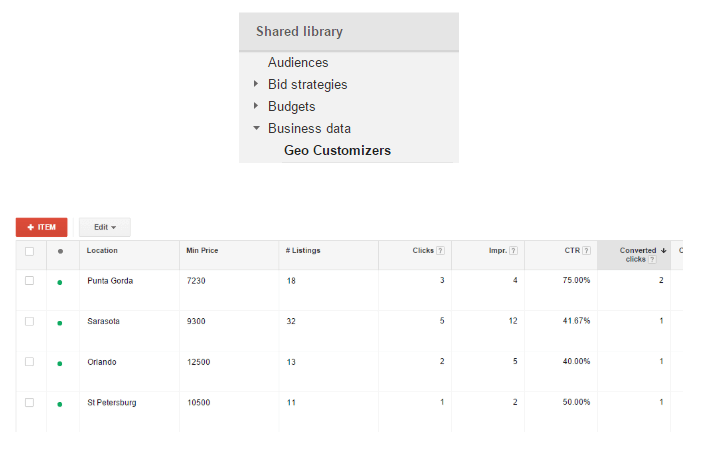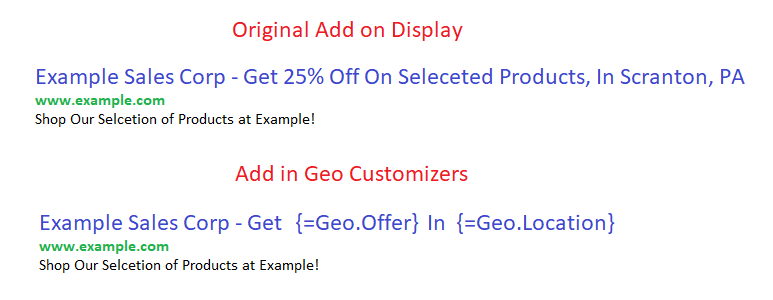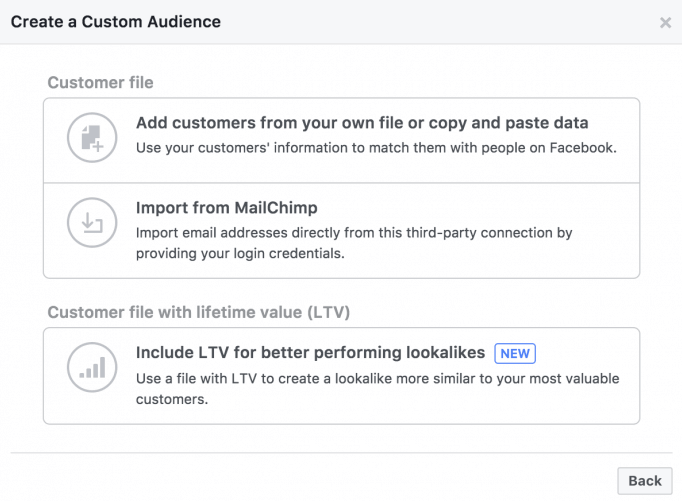
From local to global brands, we all try our best to reach out to our potential consumers. But, we often end up annoying them because our audience is bombarded with the content they don’t like.
We all find a substantial amount of spam in our inbox almost every day and have to endure dozens of banner ads while browsing the internet, don’t we?
That’s why your Pay-Per-Click (PPC) campaign not only needs to be creative but also send a personalised message to your consumers. Only then it can produce the desired results. Personalization essentially means you are taking your potential customer’s likes and dislikes into account while engaging with them. This notion alone is enough to turn them into your loyal fans.
Personalization has become more critical than ever for all marketing channels, and PPC campaigns are no exception. Fortunately, PPC personalisation is not as complicated as you would think.
Here are seven tips that will make the process easier.
#1 AI to the Rescue
The very first step towards creating a highly personalised PPC campaign would be to know as much about your target audience as possible. Each new thing you discover about your potential customers unlocks the new marketing possibilities and sales leads.
Of course, you can find out what your customers like by going through their social media profiles, browsing history, point-of-sale data, purchase history, and overall online behaviour. But, that’s not the problem. The problem arises when you have to go through tens of thousands of gigabytes of data to spot the relevant patterns. That’s where Artificial Intelligence (AI) comes in.
A. Match Offers with Needs
The traditional PPC campaigns are often moderately successful because there is a lot of guesswork involved. The general approach is to push all the content you have through different channels and see what works. This method is time-consuming, not to mention less productive.
With the help of AI, however, you will know precisely where, when, and how to promote your ads. Thus, you can run a lucrative campaign with a relatively low investment. As AI automates the process of connecting your ads with the right audience, your PPC experts can focus on more creative aspects of their job.
B. Discover High Performing and Relevant Keywords
As a PPC professional, you are probably already aware of the difficulties involved in finding the most suitable keywords for your PPC campaign. With the help of AI, you can discover, sort, and use the most relevant keywords in a flash. So, finding keywords with a strong buyer’s intent will be easy.
C. Automatically Remove Low Performing Ads
PPC campaigns are costly, especially if your ads fail to convert. AI can help you find and pause or remove underperforming advertisements depending on your preferences. Thus, you can save substantial money and time. There is no better way to personalise your PPC campaigns.
D. Automate Bidding Process
AI can also be used to automate the keyword bidding process. Just like the ads, AI will discover the most performing keywords at the lowest possible price resulting in more profit. It also helps you to boost the conversion rate considerably.
# 2. Use the Right Targeting Method
A highly personalised PPC campaign demands that you waste minimum amount of money and time on irrelevant clicks. To achieve this, you need to reach the right audience using the right targeting options. One of the easiest ways to make that happen is through the Google Display Network or GDN for short.
GDN targeting allows you to choose the audience that will see your ads based on who they are and what they like. The Google Display Network is a collection of over 2 million websites and apps, reaching over 90% of Internet users across the globe. You can choose from different targeting options to find new customers on the GDN.
A. Affinity Targeting:
Affinity targeting allows you to capture a vast number of audiences with similar interests. It includes 80 different groups of consumers. This type of targeting is better suited for long-term PPC marketing goals.
B. Contextual Targeting:
It allows you to show ads on sites related to your keywords. The option comes in handy, especially if you want to cover a category not listed in the GDN.
C. Custom Affinity Targeting:
Similiar to Affinity targeting, this option allows you to choose a customised set of audience. For example, you can break down beauty and fitness into skin care or hair care. It is usually narrower than the affinity audience, and hence more effective.
D. Demographic Targeting:
Apart from languages and locations, this option allows you to target consumers by gender (Female, Male, and Unknown), parental status (Parent, Not a Parent, and Unknown), and age (18-24, 25-34, 35-44, 45-54, 55-64, 65 or more, and Unknown).
E. In-Market Targeting:
Using this option, you can target customers who are actively searching for products or services similar to yours. They are “in the market” for a specific product. For example, when people searching for budget smartphone start browsing Amazon (or similar sites) for the same, they are in-market customers.
6. Placement Targeting:
You can choose the websites where your ads need to appear. You can use the Display Planner to find out the proposed cost and expected web traffic details.
F. Topic Targeting:
You can target all potential consumers through predefined topics such as shopping or travel. You can reach out to a wide range of audience through this option.
# 3. Test out Google’s Customer Match
Google’s Customer Match allows you to use your customer data such as their emails in your PPC campaigns. In a world, where the average email open rate is below 25%, owing to the burgeoning number of promotional emails, Customer Match enables you to get the most out of your email list.
You can upload a list of email addresses of your potential customers and apply these lists to Google Search, Gmail or YouTube campaigns to create customised experiences based on the customer’s preferences. So, when prospects sign into any of these, you can target them with relevant advertisements.
Customer Match also allows you to retarget your customers using two different YouTube advertisement options, including pre-roll ads and in-display ads. Pre-roll ads start playing automatically before the video begins. So, they are also known as in-stream ads. Usually, you are charged for an impression, provided the viewer watches a percentage of the advertisement. It becomes especially powerful when you use it to show pre-roll ads based on previous searches made on Google search. One of the powerful options of Customer Matching.
The new General Data Protection Regulation or GDPR bill prevents the collection of personal information from clients and prospects without their explicit consent. So, to create your Customer Match audience (email, phone, name, and zip code are all pretty identifying), you’ll need to get clear-cut consent from each of your prospects. It isn’t just Google’s responsibility anymore. However, GDPR is limited to the European Union only.
Uploading the Email List to Customer Match
Customer Match generates better results as it targets customers who are already interested in products similar to yours or know your brand. Thus, you can use this tool to push mid and low-funnel prospects further down the sales funnel and showcase new products to your existing customers.
- First, you will need to go to the Audience Manager option located in the Shared Library menu in your AdWords account. Then, click the blue “+” icon to create a customer list.

- You can set up the new list using a combination of six different headers including email, first name, last name, phone, country, and zip code. However, most people prefer using only emails as they are readily available.
- You can add the emails using a plain text file of email addresses. Google checks if each email is in the correct format, and lets you know accordingly.
- Then, Google will try to match your list with its targeting data. It takes less than 24 hours to complete this process. You can also add other headers pretty much the same way.
- You can include or exclude a particular list from future ad campaigns. For example, if you are offering one-time purchase products, you will need to remove the prospects that have already made the purchase.
The most crucial benefit of Customer Match is that you can target your prospects subtly. There is no oppressive targeting with dozens of promotional emails every week. Although Customer Match offers better ROI compared to any other targeting method, the conversion volume is going to be low as you are targeting a relatively small segment.
#4. Use Geo Ads for Localization
Another way to make your PPC campaign more personalised is to insert the user’s location into your advertisement. You can use a remarkable but somewhat underused feature called Geo Ad Customizers through your AdWords account. Google will dynamically display the relevant add depending on the user’s IP address.
So, you can target the local consumers, especially if you are offering a localised service or product or discount. For example, you can create an advertisement for “next day delivery” or “free shipping” or “special discount” for a particular location. The possibilities are virtually limitless.
A. Creating and Uploading the Location Feed

First, you have to decide the locations. You can select any locations or city. However, Google doesn’t recognise some small towns or classifies them as part of a larger area. So, this tool may have limitations depending on your location preferences.
- Before creating the ad, make a list of the locations and the desired text in an Excel sheet. A list of various locations is also available in the Google AdWords.

- The description should be concise and clear. If it goes over the text threshold, it will not show up in the advertisement.
- Then, you will need to go to the Shared Library option and enter the business data menu.
- In the drop-down menu, open the Ad customizer data.
- Finally, name and save your list. The Location Targeting Feed option here is a different function. So, ignore it.
B. Creating Ads
The next part involves creating ads for the Geo Ad Customizers. These ads will be similar to the ones built in other ad customers. Add the dynamic text in “Headline 2” as it will become more visible on the search page. You can test and troubleshoot your ads with the ads preview tool if necessary. Here is what it looks like.

#5. Social Media Remarketing
More often than not, potential customers will click on your advertisement, visit your website, poke around your pages a bit and then leave. Social media remarketing, in the simplest terms, is the process to get in front of the audience that is already interested in buying your product or service but is hesitant to take that final step yet.
In quarter one of 2017, the average global conversion rate for e-commerce websites was 2.48%. That means, roughly two or three customers out of a hundred bought the actual product. Fortunately, you can use remarketing to bring back those remaining 97 customers to your website.

With around two-thirds of U.S. adults (68%) becoming Facebook users, and roughly three-quarters of those users accessing their account daily, social media remarketing offers an excellent opportunity to improve your PPC campaign. There are two ways to remarketing including list-based and pixel-based.
A. List-Based Remarketing
In this method, you can upload a list of emails from your potential clients. When the customers use the same email address to access their social media profiles or the internet, you will be able to retarget them. Just like the Customer Match, the GDPR regulations will apply here too. So, you will need proper consent from each of your potential customers in the European Union before using their personal information.
This approach has no time limit and usually allows more customisation. Almost all remarketing tools (or apps) such as Adroll and ReTargeter provide this feature.
B. Pixel-Based Remarketing
Pixel-based retargeting uses an unobtrusive piece of JavaScript or cookies to track the browsing history of a potential user. You can use these cookies to notify a specific set of social media networks to show the relevant advertisements.
Unlike, list-based remarketing, this process is automated and behaviour-based. However, there is a time limit of 30 days. If the user remains absent from the site for more than 30 days, retargeting ads expire. It also won’t work if JavaScript or cookies are disabled.
Despite their drawbacks, both strategies can produce remarkable results as you are targeting a customer base with a strong purchase-intent. Alternatively, you can also use the Remarketing List for Search Ads (RLSA) tool in the AdWords for remarketing which we will discuss in detail next.
#6. Remarketing List for Search Ads (RLSA)
At first, the concept of Remarketing List for Search Ads (RLSA) may seem like pixel-based remarketing used on the Google Display Network. But, it’s a lot more different than you think. They both use cookies to track the user behaviour, but the similarities end just about there. RLSA allows you to create a more granular and personalised PPC campaign.
Unlike the conventional remarketing methods, RLSA will show advertisements only if the user is on your Remarketing List AND is using the relevant keywords for searching. In other words, your chances of converting a lead are pretty high as the users are actively seeking for the product or service in question.
Setting up RLSA Campaigns
Before setting up an RLSA campaign, you will need to make sure your website has the AdWords remarketing code. You can’t proceed further without this step.

- Go to the Audiences section of the Shared Library. You can either select an existing ad campaign or create a new one. Now, click the Audiences tab.
- In the drop-down Targeting menu, select Add Targeting and then choose Interests & Remarketing option. Next, click the Select categories drop-down menu and select Remarketing lists.
- Clicking the double arrows (») next to each remarketing list will add it to your current Ad Group.
- You can either save the campaign as Target & Bid or Bid Only. Selecting Target & Bid option will show ads only to members of the remarketing lists when they use the relevant keywords for searching. The Bid Only option, on the other hand, will show adds to the potential customers outside the remarketing lists.
#7. Targeting on Facebook and Twitter
You can also use the Facebook and Twitter targeting capabilities to get your message across to your potential customers. With 2.20 billion monthly active users, Facebook is the most popular social platform, while Twitter has 336 million monthly active users. You can’t afford to overlook these two platforms in your PPC campaign.
Facebook Ads
With Facebook Ads, reaching your target audience with a super-relevant message is better and faster than promoting organic posts. Facebook’s Audience Insights is the tool you will need to master to learn the various tricks of PPC advertising on this platform.
A. Audience Insights
This tool offers you a deeper understanding of your target audience based on numerous categories and subcategories. The five main types include
- Demographics
You can choose the target audience based on their age, gender, lifestyle, education, relationship status, job role, and household size. - Page Likes
You can target the potential customers who like the pages relevant to your offerings. - Location and Language
Local and small businesses can take advantage of this feature. You can select the specific area where your audience belongs (country, state, regions, cities, and local areas) and also the language they speak. - Facebook Usage
You can select the audience based on how frequently they use Facebook and the type of devices they use. - Purchases Activity
You can target consumers based on their past purchase behaviour and buying methods.
B. Custom Audiences
It allows you to take advantage of your existing customer databases such as emails, phone numbers or Facebook IDs. However, you will need to save the list on a .txt file in a program such as Notepad.

- To add the list to your campaign, open Adverts Manager, and go to the Audiences tab.
- Then, open the Create New Audience tab, and select Customer List.
- Now, you can upload the .txt file. It will be ready for use in a few minutes.
C. Lookalike Audiences
This feature is available in the Custom Audiences. It allows you to target users that are similar to the ones on your custom audience list. It is the Facebook’s version of AdWords Similar Audiences. Facebook will identify the similar audiences through a demographic discovery.
However, you will need at least 100 source audiences to create a lookalike audience list. One source audience translates into to 500 lookalike audiences. There are no geographic constraints between your source audience and lookalike audience. For example, you can create lookalike audience in New Zealand using the source audience from Canada.
Twitter Ads
Twitter’s built-in targeting capabilities allow you to reach your potential customers via their behavior, gender, geo-location, language, devices and operating systems, keywords, competitors, industry influencers, and interests.
1. Geo Location
You can target your audience by country, state, regions, metro areas, and zip codes. You can either search for specific locations or import multiple locations. These options are available in the Audience Profile menu.
2. Language
You can combine the geo-targeting with language targeting to connect with people in their native tongue.
3. Gender
It includes three options, any gender, male, and female. You can select one of those.
4. Device or Operating System
Using Devices and Platforms option, you can connect to users with particular devices (Desktop, Mobile, Tablet), operating systems (iOS and Android), or even Wi-Fi connectivity. You can also combine geo-targeting and device targeting for better outreach.
5. Interests
In the Add Interests option, you can choose from 25 categories and more than 350 subcategories. You can select the categories that are in-line with your business offerings.
6. Behavior
You can also target the audience based on their buying patterns. You can add different buying habits that fit your product or service.
7. Keywords
Just like AdWords, Twitter also offers keyword-based targeting. You can target users based on their search queries and recent tweets. You can choose from different matches including Broad Match, Phrase Match, Negative Match, and Negative Phrase Match.
8. Competitors and Industry Influencers
Twitter allows you to add specific usernames such as industry influencers and your competitors that will help you grow your business. You can show the relevant advertisement to followers of users on your list.
Over to You
With even the slightest personalisation, throwing together a highly successful paid search campaign becomes a lot easier. Apart from knowing your audience exactly, you will also need a comprehensive knowledge of how to leverage various technologies and tools to take the personalisation to the next level.
Hopefully, these seven tricks will prove helpful in this regard. From leverage, the data collected through powerful AI application to taking advantage of built-in targeting capabilities of social media platforms such as Facebook and Twitter, all these tips are easy to understand and implement.
What did you do to personalise your PPC campaigns? Feel free to share your ideas and experiences in the comments.
 This is a guest post by Manish Dudharejia, Manish is the President and Founder of E2M Solutions Inc, a San Diego Based Digital Agency that specialises in Website Design & Development and eCommerce SEO. With over ten years of experience in the Technology and Digital Marketing industry, Manish is passionate about helping online businesses to take their branding to the next level. You can connect with Manish on Twitter: @Manish_Analyst
This is a guest post by Manish Dudharejia, Manish is the President and Founder of E2M Solutions Inc, a San Diego Based Digital Agency that specialises in Website Design & Development and eCommerce SEO. With over ten years of experience in the Technology and Digital Marketing industry, Manish is passionate about helping online businesses to take their branding to the next level. You can connect with Manish on Twitter: @Manish_Analyst

